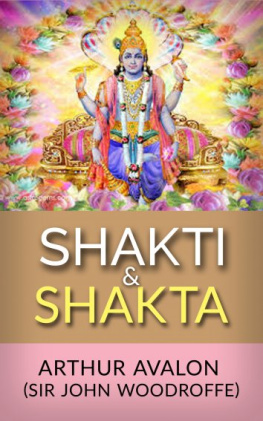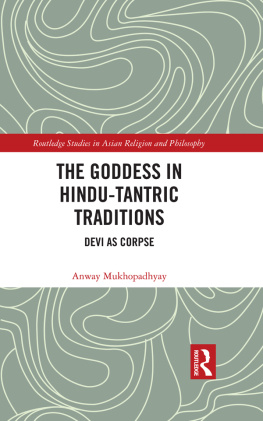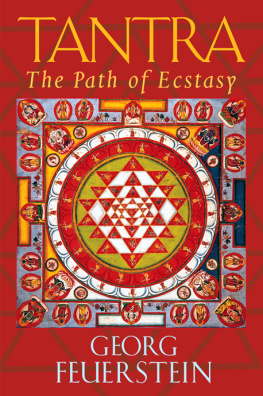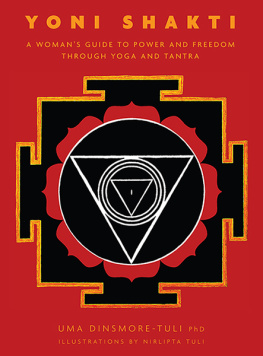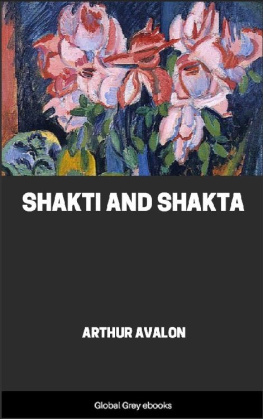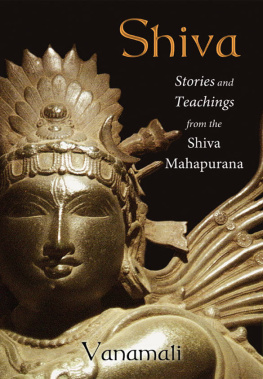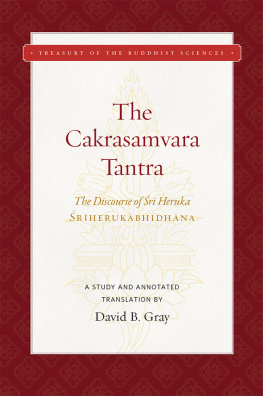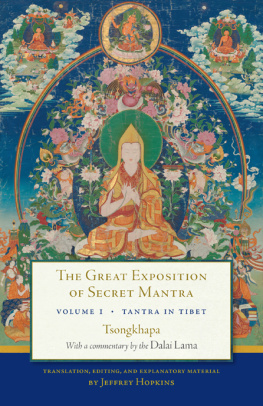Arthur Avalon (John Woodroffe) - Shakti and Shakta
Here you can read online Arthur Avalon (John Woodroffe) - Shakti and Shakta full text of the book (entire story) in english for free. Download pdf and epub, get meaning, cover and reviews about this ebook. year: 2017, genre: Religion. Description of the work, (preface) as well as reviews are available. Best literature library LitArk.com created for fans of good reading and offers a wide selection of genres:
Romance novel
Science fiction
Adventure
Detective
Science
History
Home and family
Prose
Art
Politics
Computer
Non-fiction
Religion
Business
Children
Humor
Choose a favorite category and find really read worthwhile books. Enjoy immersion in the world of imagination, feel the emotions of the characters or learn something new for yourself, make an fascinating discovery.
- Book:Shakti and Shakta
- Author:
- Genre:
- Year:2017
- Rating:5 / 5
- Favourites:Add to favourites
- Your mark:
- 100
- 1
- 2
- 3
- 4
- 5
Shakti and Shakta: summary, description and annotation
We offer to read an annotation, description, summary or preface (depends on what the author of the book "Shakti and Shakta" wrote himself). If you haven't found the necessary information about the book — write in the comments, we will try to find it.
Shakti and Shakta — read online for free the complete book (whole text) full work
Below is the text of the book, divided by pages. System saving the place of the last page read, allows you to conveniently read the book "Shakti and Shakta" online for free, without having to search again every time where you left off. Put a bookmark, and you can go to the page where you finished reading at any time.
Font size:
Interval:
Bookmark:
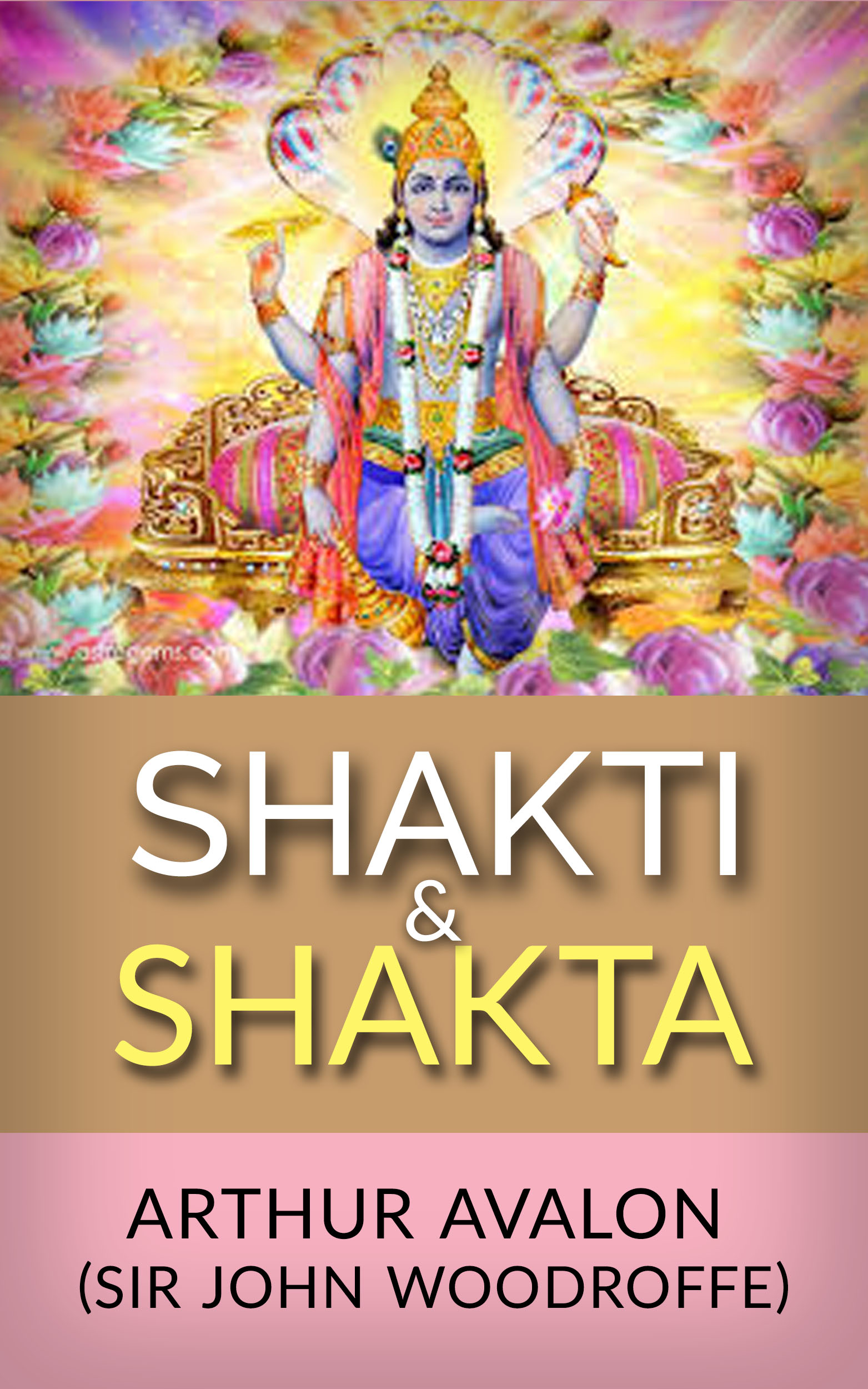
SHAKTI ANDSHAKTA
by
ARTHUR AVALON
(SIR JOHN WOODROFFE)
First digital edition 2017 byMaria Ruggieri
CHAPTER ONE. INDIAN RELIGION ASBHARATA DHARMA
A FRIEND of mine who read the firstedition of this book suggested that I should add to it an openingChapter, stating the most general and fundamental principles of thesubject as a guide to the understanding of what follows, togetherwith an outline of the latter in which the relation of the severalparts should be shown. I have not at present the time, nor in thepresent book the space, to give effect to my friends wishesin the way I would have desired, but will not altogether neglectthem.
To the Western, Indian Religiongenerally seems ajungleof contradictory beliefsamidst which he is lost. Only those who have understood its mainprinciples can show them the path.
It has been asserted that there isno such thing as Indian Religion, though there are many Religionsin India. This is not so. As I have already pointed out (Is IndiaCivilized?) there is a common Indian religion which I have calledBharata Dharma, which is an Aryan religion (Aryadharma) held by allAryas whether Brahmanic, Buddhist or Jaina. These are the threemain divisions of the Bharata Dharma. I exclude other religions inIndia, namely, the Semitic religions, Judaism, Christianity andIslam. Not that all these are purely Semitic. Christianity becamein part Aryanized when it was adopted by the Western Aryans, asalso happened with Islam when accepted by such Eastern Aryans asthe Persians and the Aryanized peoples of India.Thus,Sufism iseither a form of Vedanta or indebted to it.
The general Indian Religion orBharata Dharma holds that the world is an Order or Cosmos. It isnot a Chaos of things and beings thrown haphazard together, inwhich there is no binding relation or rule. The world-order isDharma, which is that by which the universe is upheld (Dharyate).WithoutDharma,it would fall to pieces and dissolve intonothingness. But this is not possible, for though there is Disorder(Adharma), it exists, and can exist only locally, for a time, andin particular parts of the whole. Order however will and, from thenature of things, must ultimately assert itself. And this is themeaning of the saying that Righteousness or Dharma prevails. Thisis in the nature of things, for Dharma is not a law imposed fromwithout by the Ukase of some Celestial Czar. It is the nature ofthings; that which constitutes them what they are(Svalakshana-dharanat Dharma). It is the expression of their truebeing and can only cease to be, when they themselves cease to be.Belief in righteousness is then in something not arbitrarilyimposed from without by a Lawgiver, but belief in a Principle ofReason which all men can recognize for themselves if theywill.Again,Dharma is not only the law of each being but necessarilyalso of the whole, and expresses the right relations of each partto the whole. This whole is again harmonious, otherwise it woulddissolve.The principle which holds it together as one mightyorganism is Dharma. The particular Dharma calls for suchrecognition and action in accordance therewith. Religion,therefore, which etymologically means that which obliges or bindstogether, is in its most fundamental sense the recognition that theworld is an Order, of which each man, being, and thing, is a part,and to which each man stands in a definite, established relation;together with action based on, and consistent with, suchrecognition, and in harmony with the whole cosmic activity. Whilsttherefore the religious man is he who feels that he is bound invarying ways to all being, the irreligious man is he whoegoistically considers everything from the standpoint of hislimited self and its interests, without regard for his fellows, orthe world at large. The essentially irreligious character of suchan attitude is shown by the fact that, if it were adopted by all,it would lead to the negation of Cosmos, that isChaos.Therefore,all Religions are agreed in the essentials ofmorality and hold that selfishness, in its widest sense, is theroot of all sin (Adharma). Morality is thus the true nature of man.The general Dharma (Samanya Dharma) is the universal law governingall, just as the particular Dharma (Vishesha Dharma) varies with,and is peculiar to, each class of being. It follows from what isabove stated that disharmony is suffering. This is an obvious fact.Wrong conduct is productive of ill, as right conduct is productiveof good. As a man sows, so he will reap. There is an ImmanentJustice. But these results, though they may appear at once, do notalways do so. The fruit of no action is lost. It must, according tothe law of causality, which is a law of reason, bear effect. If itsauthor does not suffer for it here and now in the present life, hewill do so in some future one. Birth and death mean the creationand destruction of bodies. The spirits so embodied are infinite innumber and eternal. The material universe comes and goes. This inBrahmanism has been said (see Sanatana Vaidika Dharma by BhagavanDas) to bethe Systole and Diastole of the one UniversalHeart,itselfat rest -- the moveless play of Consciousness.The appearance and disappearance of the Universe is the nature orSvabhava of That which it ultimately is. Its immediate cause isDesire, which Buddhism calls Trishna,or Thirst, that is desire orthirst for world-enjoyment in the universe of form. Action (Karma)is prompted by desire and breeds again desire. This action may begood (Dharma) or bad (Adharma) leading to enjoyment or suffering.Each embodied soul (Jivatma) will be reborn and reborn into theworld until it is freed from all desire. This involves the doctrineof Re-incarnation. These multiple births and deaths in thetransmigratory worlds are called Samsara or Wandering. The world isa Dvandva, that is, a composite of happiness and suffering.Happiness of a transitory kind may be had therein by adherence toDharma in following Kama (desire) and Artha (the means) by whichlawful desires may be given effect. These constitute whatBrahmanism calls the Trivarga of the Purushartha, or three aims ofsentient being. But just as desire leads to manifestation in form,so desirelessness leads away from it. Those who reach this stateseek Moksha or Nirvana (the fourth Purushartha), which is a stateof Bliss beyond the worlds of changing forms. For there is a restfrom suffering which Desire (together with a natural tendency topass its right limits) brings upon men. Theymust, therefore, eitherlive with desire in harmony with the universal order, or ifdesireless, they may (for each is master of his future) pass beyondthe manifest and become That which is Moksha or Nirvana. Religion,and therefore true civilization, consists in the upholding ofDharma as the individual and general good, and the fostering ofspiritual progress, so that, with justice to all beings, truehappiness, which is the immediate and ultimate end of all Humanity,and indeed of all being, may be attained.
Anyone who holds these beliefsfollows the Bharata Dharma or common principles of all Aryanbeliefs.Thus,as regards God we may either deny His existence(Atheism) or affirm it (Theism) or say we have no sufficient proofone way or another (Agnosticism). It is possible to accept theconcept of an eternal Law (Dharma) and its sanctions in aself-governed universe without belief in a personal Lord(Ishvara).So,Samkhya, which proceeds on intellectual proofonly,doesnot deny God but holds that the being of a Lordisnot proved.
There are then based on this commonfoundation three main religions, Brahmanism, Buddhism and Jainism.Of the second, a great and universal faith, it has been said that,with each fresh acquirement of knowledge, it seems more difficultto separate it from the Hinduism out of which it emerged and intowhich (in Northern Buddhism) it relapsed. This is of course not tosay that there are no differences between the two, but that theyshare in certain general and common principles as their base.Brahmanism, of which the Shakta doctrine and practice is aparticular form, accepts Veda as its ultimate authority. By this,in its form as the four Vedas, is revealed the doctrine of theBrahman, theAll-pervader,the infinite Substance whichis in Itself (Svarupa) Consciousness (Caitanya or Cit), from Whichcomes creation, maintenance and withdrawal, commonly calleddestruction (though man, not God, destroys), and Which in Itsrelation to the universe which the Brahman controls is known asIshvara, the Ruling Lord or Personal God. Veda both as spiritualexperience and the wordwhich is heard(Shruti) is thewarrant for this. But Shruti, as the ultimate authority, hasreceived various interpretations and so we find in Brahmanism, asin Christianity, differing schools and sects adopting variousinterpretations of the Revealed Word. Veda says:All this(that is, the Universe) is Brahman.All are agreed thatBrahman or Spirit is relatively to us, Being (Sat), Consciousness(Cit) and Bliss (Ananda). It is Saccidananda. But in what senseisThis(Idam) Brahman? The Monistic interpretation(Advaitavada), as given for instance by the great scholasticShamkaracarya, is that there is a complete identity in essence ofboth. There is one Spirit (Atma) with two aspects: as transcendentsupreme (Paramatma), and as immanent and embodied (Jivatma). Thetwo are at base one when we eliminate Avidya in the form of mindand body. According to the qualified Monism (Vishishtadvaita) ofthe great scholastic Ramanuja,Thisis Brahman in thesense that it is the body of the Brahman, just as we distinguishour body from our innerself. According to the Dualists (Dvaitavada)the saying is interpreted in terms of nearness (Samipya) andlikeness (Sadrishya) for, though God and man are distinct, theformer so pervades and is so inextricably involved in the universeas creator and maintainer, that the latter, in this sense, seems tobe Brahman through proximity.
Font size:
Interval:
Bookmark:
Similar books «Shakti and Shakta»
Look at similar books to Shakti and Shakta. We have selected literature similar in name and meaning in the hope of providing readers with more options to find new, interesting, not yet read works.
Discussion, reviews of the book Shakti and Shakta and just readers' own opinions. Leave your comments, write what you think about the work, its meaning or the main characters. Specify what exactly you liked and what you didn't like, and why you think so.

